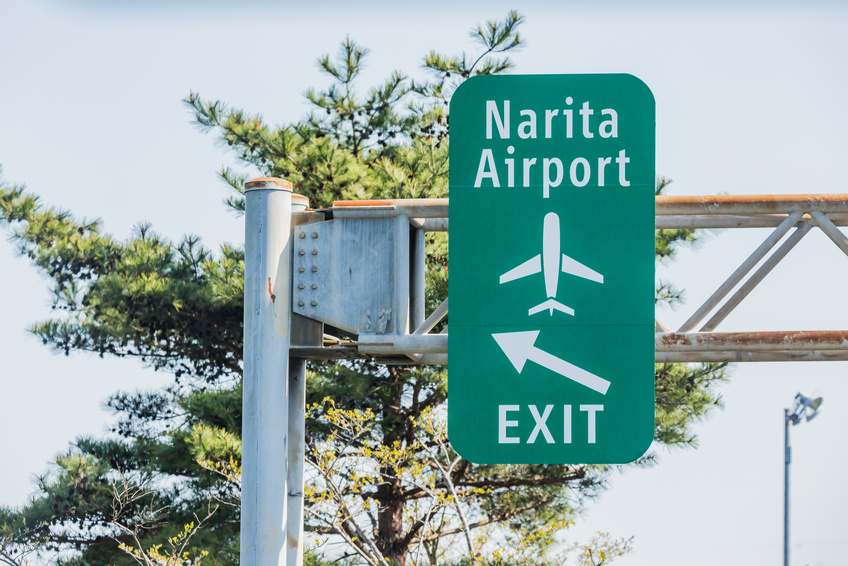
Narita airport, the main gateway of Japan for visitors who arrive by air. The number of international airlines that fly to Haneda airport has increased a lot in recent years, however, Narita still has the largest number of international flights among all Japanese airports. One thing Narita airport has a slight disadvantage compare to Haneda airport is, the distance from the Tokyo metropolitan area. Narita airport is located 70km away from Central Tokyo, so passengers may think they will have to cope with another long travel after landing as well as a higher transport fee. But wait, direct trains do not take too long to get to Central Tokyo and express buses are not very expensive. In addition, if you know Japanese public transportations, you may be able to save transportation fees by changing bus or train.
This column will introduce some main transportation methods to travel to Shinjuku in Central Tokyo in terms of fares and travel times.
Airport Limousine (Direct)
Narita Airport – Sinjuku Expressway Bus Terminal
Single fare: 3,100yen
Travel time: Approx. 90min
Airport limousine is one of the main transportation methods connecting Narita airport and Central Tokyo. It takes approximately 90 minutes from Narita airport to Shinjuku by airport limousine. Sometimes buses get avoided due to inaccurate services, but in reality, airport limousine services are known for a good punctuality in recent years. There are more remarkable advantages of limousine buses. Bus staff assists passengers to load their heavy luggage while you have to carry all your belongings on a train. Also a limousine bus stops at major hotels such as Hilton Tokyo and Park Hyatt Tokyo for convenience of passengers who stay at those hotels. Considering transportation costs and travel time from railway station to an accommodation, a limousine bus can be the most efficient way of travel.
Airport Limousine & Train
Narita airport terminal bus stop – JR Shinjuku station
Single fare: 1,200yen (Narita airport – JR Tokyo station 1,000yen, JR Tokyo station – Shinjuku station 200yen)
Travel time: 1hour 40minutes
Narita airport is farther apart from Central Tokyo than Haneda airport. Whatever transportation is used, travel cost is a little higher accordingly. If you are a budget traveler, combining limousine bus and JR local train is the best way to travel between Narita airport and Shinjuku. That is, taking limousine bus from Narita airport to Tokyo station, then JR local train from Tokyo to Shinjuku. Keisei Bus, Keisei Bus System, Narita Airport Transport and Limousine Passenger Service service connect Narita airport and Tokyo station for singe fare of 1,000yen. The fare is discounted to 900yen if booked in advance. Passengers need to get off a bus at Yaesu exit of Tokyo station and move to JR line, but this is the best way to save travel cost.
Trains
①Narita Express (N’EX)
Narita airport terminal 2-3 & 1 – JR Shinjuku station
Single fare: 3,190yen
Travel time: approx. 80minutes
Narita Express is the most known transportation connecting Narita airport and Central Tokyo. Great accuracy, comfortable seats and more than anything, there is no need to change trains. Narita Express is operated every 30 minutes between Narita airport and the Tokyo metropolitan area during the daytime to smoothly transport passengers who have passed immigration procedures. The majority of foreign visitors also choose Narita Express. One downside is that travel time is rather long, approximately 80 minutes, due to its route detours to cover the south area of the city such as Shinagawa instead of running straight across the city. Accordingly, fares of Natira Express is rather expensive.
②Keisei Skyliner & JR local train
Narita airport terminal 2-3 & 1 – JR Shinjuku station (change at Nippori)
Single fare: 2,670yen (Skyliner Nrita airport – JR Nippori 2,470yen, JR local train Nippori – Shinnjuku 200yen)
Travel time: approx. 70minutes
If you are an advanced traveler in Tokyo area, you may want to take Keisei Skyliner from Narita airport and change trains at Nippori and go to Shinjuku by JR local line. This way, you can get to Shinjuku sooner and travel cost is a little lower. Note that Keisei Skyliner is operated by Keisei Electric Railway, not JR, and you have to go through the gate to change trains to move to JR platform. This is not very suitable way for those who are unfamiliar with train systems in Tokyo area, as changing trains can be quite complicated thus time consuming.
Are you almost there?
Somehow, many people seem to believe that there are no other means of transport than Narita Express or airport limousine. But in fact, there are many other ways to save travel cost from Narita to Central Tokyo just by changing trains or buses. If you are visiting Japan for the first time, it may safer to choose a direct train or bus from Narita to Tokyo. But if you are frequent visitor, why not try other route? The combination of limousine and local train, among other thing, is the best way to save your fees and worth trying!
Related Article:
Super saver train & bus tickets only for foreign tourists
The ultimate comparison: What is the cheapest way to travel Tokyo – Kyoto?
Heading north? The three best way to travel between Tokyo and Hokkaido
Heading south? The best way to travel between Tokyo and Okinawa
Heading west? The best way to travel between Tokyo and Osaka
Landing at Haneda airport? Find the best access to Shinjuku
For all Temporary Visitor visa holders: Check these JR passes
